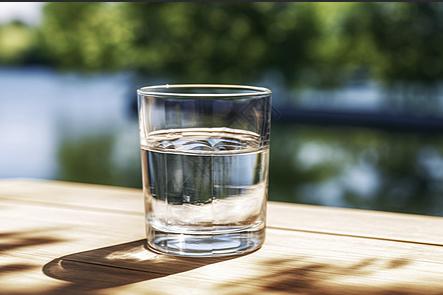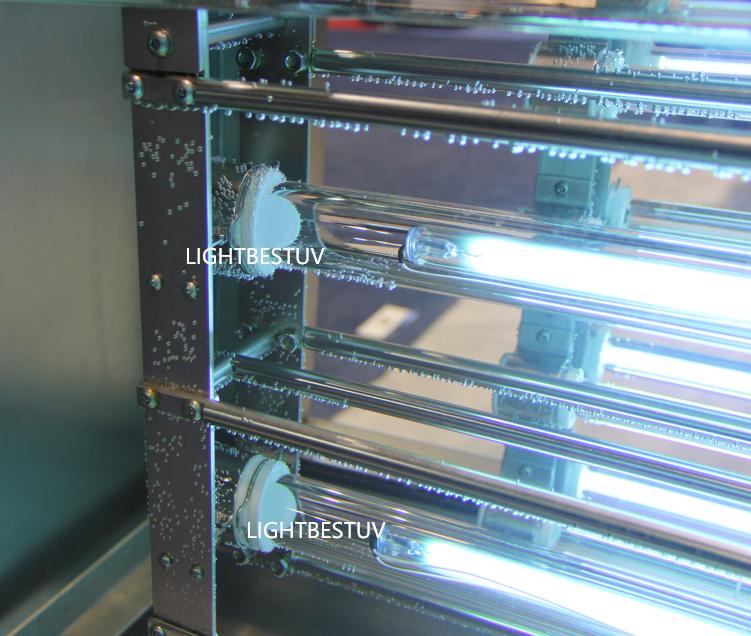UV germicidal lamps are an efficient and environmentally friendly disinfection method used in water treatment. They inactivate microorganisms by damaging their DNA structure. However, to ensure safety and effectiveness in practical applications, the following key considerations must be observed:
I. Key Considerations
1. Limited Penetration Power
Applicable Scenarios: Ultraviolet (UV) disinfection is most effective in clear or low-turbidity water, such as drinking water and swimming pool water.
Limiting Factors: Suspended solids, rust, algae, or organic matter can absorb or scatter UV light, significantly reducing its sterilization efficiency.
Solutions:
Pretreatment: Reduce water turbidity through filtration, sedimentation, or coagulation.
Regular Cleaning of UV Lamps: Prevent scaling or biofilm buildup on the lamp surface (consider using automatic cleaning systems or chemical cleaning agents).

2. Lamp Lifespan and Maintenance
Lifespan: Quartz UV lamps typically have a lifespan of 5,000 hours and should be replaced regularly. It is recommended to check the UV intensity every 1–2 years.
Maintenance Tips:
Record the operating hours to avoid exceeding the recommended usage time.
Clean the lamp surface regularly using a soft cloth or specialized cleaner to prevent scratches.
Inspect the ballast and quartz sleeve for signs of aging or water leakage.
3. UV Dose Control
Dose Formula: UV Dose (mJ/cm²) = UV Intensity (mW/cm²) × Exposure Time (s)
Key Parameters:
Flow Rate: Excessively fast water flow can lead to insufficient contact time.
Lamp Arrangement: Ensure uniform water distribution to avoid short-circuiting (dead zones).
Reflectivity: Use high-reflectivity materials (such as polished aluminum) to improve energy efficiency.
4. Safety Protection
Personnel Protection:
Avoid direct exposure to the light source (may cause photokeratitis).
Wear UV-protective goggles and gloves during operation.
Install interlock devices to prevent the equipment from being turned on while the lamp is not properly shut off.
Environmental Safety:
Prevent UV leakage (use sealed designs and regularly inspect for potential leakage points).

II. Special Considerations for Specific Scenarios
1. Hard Water Treatment
Calcium and magnesium ions in hard water can easily form scale on the surface of UV lamps. To prevent this, it is necessary to:
Install a water softener,Add anti-scaling agents, or use UV lamps with anti-scaling coating.
2. Low-Temperature Environment
Low temperatures reduce microbial activity, but the required UV dose remains unchanged. Therefore, it is essential to:
Maintain the water temperature within the 5–40°C range (to avoid lamp cracking or reduced efficiency),
Add a preheating step for cold water sources (e.g., groundwater).
3. High-Turbidity Water
When turbidity exceeds 5 NTU, UV disinfection should be combined with other methods (such as chlorination):
UV can serve as an auxiliary disinfection method, helping to reduce chlorine usage (thereby minimizing the formation of by-products like trihalomethanes),
A multi-stage filtration combined with UV disinfection is recommended.
III. Comparison and Synergy with Other Disinfection Technologies
1. Comparison with Chlorine Disinfection
Advantages: No residuals, no disinfection by-products (DBPs), and short contact time.
Disadvantages: Lacks residual disinfection capability (requires chlorine or ozone to maintain residual effect).
Synergistic Approach: UV + chloramine disinfection (suitable for secondary water supply systems).
2. Synergy with Ozone
Ozone oxidizes organic matter, enhancing UV light penetration; UV irradiation decomposes residual ozone.
The ozone dosage must be carefully controlled to avoid excessive formation of bromate.
IV. Regulations and Standards
International Standards: Comply with NSF/ANSI 55 or the USEPA UV Guidance Manual.
Domestic Standards: Refer to “Ultraviolet Disinfection Equipment for Drinking Water” (CJ/T 204-2013).
Certification Requirements:Choose equipment certified by UL, CE, FCC, UKCA, ROHS, etc., to ensure safety and compliance.
V. Common Issue Troubleshooting
Reduced Sterilization Efficiency: Check lamp intensity, water flow distribution, or the effectiveness of pre-treatment.
Frequent Lamp Failures: Investigate voltage stability, ballast compatibility, or possible cooling system issues.
Odor in Outlet Water:May be due to ozone leakage or microbial residues; adjust process parameters accordingly.
With scientific design, regular maintenance, and strict operational procedures, ultraviolet sterilization lamps can serve as an efficient and safe disinfection solution in water treatment—especially suitable for scenarios sensitive to chemical residues, such as drinking water and water used in food processing.
Post time:2025-08-06 10:54:21

